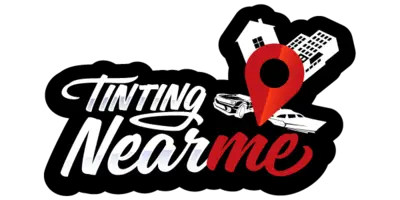2024 Pennsylvania Legal Tint Laws Explained
Navigating the murky waters of window tinting laws can be a challenge. You’ve likely heard about the 2024 Pennsylvania Legal Tint Laws and wondered how they apply to you. In a nutshell, these laws dictate how dark or reflective your car’s windows can be, but there’s more to them than meets the eye. They cover everything from the percentage of light allowed through your windows, to exemptions for certain medical conditions. Stick around as we unravel these regulations piece by piece, making them easier to understand, and ultimately helping you stay on the right side of the law.
The information on myeyerx.net isn’t legal advice; consider it a starting point. Always verify with local and state authorities, as the final decision rests with you. We are not lawyers. For specific legal guidance, we can refer you to legal experts. Remember, knowledge of both state and local laws is essential, and even law enforcement might not be fully updated. We aim for accuracy but advise double-checking for the latest regulations.
Key Takeaways
Key Takeaways
Key Takeaways
- Pennsylvania requires sedans, SUVs, and vans to have a minimum Visible Light Transmission (VLT) of 70% for windshields and front side windows.
- There is no specific minimum VLT requirement for back side windows and rear windows of larger vehicles.
- Windshields must have a minimum of 70% VLT, with any darkness level allowed on the top three inches.
- Vehicles with tinted windows must display a sticker indicating legal tint compliance.
Need Help Getting a Medical Exemption?
Our Doctors Are Here For You!
MyEyeRx was established with the objective of simplifying the complex landscape of state regulations pertaining to legal tint medical exemptions for window tinting. For individuals seeking to navigate these regulations without resorting to a do-it-yourself approach, we offer a streamlined solution. Our team includes qualified medical professionals who are available to conduct consultations via Zoom. These sessions are designed to assess your eligibility for a medical exemption, ensuring a personalized and efficient process for acquiring the necessary documentation.
Understanding Visible Light Transmission
Diving into the core of Pennsylvania’s tint laws, let’s first shed light on a key term: Visible Light Transmission (VLT), which is the percentage of visible light permitted to pass through your vehicle’s windows. This fundamental concept is crucial to understanding Pennsylvania window tint regulations.
VLT requirements in Pennsylvania vary depending on the type of vehicle. For sedans, Pennsylvania tint laws mandate that the windshield and front side windows must allow 70% or more light in, ensuring adequate visibility for safe driving. This rule also applies to SUVs and vans. However, when it comes to the back side windows and rear windows of these larger vehicles, the law becomes less stringent, with no specific minimum VLT requirement.
What you should also be aware of is the prohibition of metallic and mirrored tints under Pennsylvania law. Such window films can reflect sunlight, potentially dazzling other drivers and thus posing a safety risk. Also, if you’re thinking about adding car window tint to your side or rear windows, you’ll need to install dual side view mirrors. This PA tint law is in place to guarantee you have sufficient visibility even with darker tint.
But what if you have a medical condition that necessitates a darker tint? Per state law you can get a tint exemption in Pennsylvania, allowing for darker window tint, as long as you have the right documentation.
If you would like to bypass having to fill out paperwork and dealing with the state, we can help you get an online medical exemption for window tint in Pennsylvania.
Permissible Tint Darkness Levels
Building on our understanding of Visible Light Transmission, let’s now examine the specific levels of permissible tint darkness under Pennsylvania law. The Pennsylvania legal tint laws establish guidelines for the darkest tint you can legally have on your vehicle’s windows. These laws, set forth by the Pennsylvania Department of Transportation, aim to ensure road safety for all users, including pedestrians, cyclists, and other motorists.
The permissible tint darkness levels vary depending on the window location. For windshields, the legal tint in PA must permit a minimum of 70% Visible Light Transmission (VLT), with any darkness level allowed on the top three inches. This ensures that the driver’s visibility is not overly compromised.
The PA window tint laws for front side windows are similar. These windows must also allow more than 70% of light to pass through the window tint film. The rules differ slightly for the back side and rear windows of cars, which must also allow more than 70% of light in. However, the state law provides more flexibility for SUVs and vans, permitting any tint darkness level on their back side and rear windows.
Notably, the Pennsylvania window tinting laws prohibit tint from appearing reflective or mirrored. This rule is in place to prevent potential glare issues that could impair other drivers’ visibility.
The key to staying within the legal boundaries of the darkest tint permitted in PA is understanding and adhering to these specific levels. By doing so, you can enjoy the benefits of window tinting while remaining compliant with state law.
Tint Reflection and Regulations
In addition to tint darkness levels, Pennsylvania’s window tint laws also regulate the reflectiveness of your vehicle’s tint, aiming to ensure safety and visibility on the road. These regulations in Pennsylvania are vital to reducing the risks of accidents due to limited visibility caused by excessively reflective tints.
Pennsylvania window tint law clearly states that any tinting applied to your car’s windows and rear windows should not have a mirrored or reflective appearance. This regulation is strictly enforced on both front side windows and back side windows of all vehicles. It’s important to note that a mirrored tint can significantly reduce the light entering your vehicle, thereby posing a safety threat.
Further, Pennsylvania law mandates the use of dual side view mirrors for any vehicle with tinted side or rear windows. This rule is intended to compensate for the reduced visibility that may result from window tinting, ensuring you have a clear view of your surroundings at all times when driving.
If you have a medical condition that necessitates darker window tint, Pennsylvania’s Window Tint Laws allow for medical exemptions. However, you’ll need proper documentation from a licensed physician or optometrist to qualify. Once you’ve tinted your windows, it’s required that your vehicle displays a sticker indicating legal window tint compliance. This helps law enforcement officials quickly ascertain whether your vehicle’s window tint is within legal limits.
Understanding and adhering to the ‘Tint Reflection and Regulations’ in Pennsylvania can help you avoid legal troubles and keep you safe on the road.
Enforcement and Legal Penalties
When it comes to the enforcement of window tint laws in Pennsylvania, you can face hefty fines up to $110 for a single violation. Law enforcement in the Keystone State takes these regulations seriously, and failure to adhere to Pennsylvania’s window tint laws can result in more than just a light dip in your wallet.
Multiple offenses or repeated breaches of local tint laws can lead to larger fines and repeated window tint tickets. You could find yourself in a cycle of penalties if you don’t address the problem. It’s crucial to remove illegal tint to avoid further tickets and potential legal consequences.
The legal penalties don’t stop at fines. Court officials or judges may issue larger fines for certain tint offenses, making compliance with these laws more than just a good idea—it’s a requirement. If you continuously ignore these laws, you may find yourself needing the services of a law firm to navigate the complex legal waters.
There’s an exception to every rule, and in the case of tint laws, medical exemptions are available. If a darker tint is required for medical reasons, you’ll need to obtain proper documentation to avoid legal penalties.
Exemptions and Medical Waivers
While you’ll face penalties for violating Pennsylvania’s window tint laws, there are certain situations, such as medical conditions and specific vehicle types, where exemptions apply. If you’ve a physical condition certified by a licensed physician or an optometrist, and the condition requires more sun protection than the legal 95 limit allows, you can apply for medical exemptions.
To qualify for these medical exemptions, your physician must provide documentation detailing your medical condition and its requirement for additional window tinting. It’s crucial to keep this documentation in your vehicle at all times, as it serves as your legal protection should law enforcement question your window tint’s legality.
Speaking of law enforcement, Pennsylvania law includes exemptions for specific vehicle types. Law enforcement vehicles, government vehicles, and ambulances are exempt from window tint regulations. This exemption recognizes the need for privacy and security in these vehicles, given their unique roles.
Despite these exemptions, there are still rules to follow. If you’ve a tinted rear window, you’re required to have dual side mirrors, whether or not you have a medical condition. This rule ensures visibility and safety on the road.
As for tint color and certification, Pennsylvania law doesn’t impose restrictions or requirements. However, it’s important to ensure that any window tinting is labeled as compliant with the law. This labeling, known as ‘Tint Legal in PA’, serves as proof of your tint’s legality, offering further protection against potential penalties.

Don't want the hassle? Let us take care of your exemption for you!
MyEyeRx.net is here to help you streamlines the process of obtaining a medical exemption for window tint online. Explore our services to easily transform your window tint from non-compliant to legally approved!
Because of the differences in each of the 50 states, we’ve crafted distinct guides for securing window tint medical exemptions for each of the individual states.

Toriano (Tory) Dewberry
Become one of the many satisfied clients Toriano has assisted in obtaining a medical exemption without stepping out of their homes. Click the button below to begin and discover if you're eligible for a medical exemption.

Toriano (Tory) Dewberry
Become one of the many satisfied clients Toriano has assisted in obtaining a medical exemption without stepping out of their homes. Click the button below to begin and discover if you're eligible for a medical exemption.
Frequently Asked Questions (FAQ'S)
What Is the Darkest Legal Tint in Pa?
In PA, you’re allowed to have the darkest tint on rear side windows of SUVs and vans with no light percentage restriction. However, windshields and front side windows must let in over 70% light. Note, metallic and mirrored tints are illegal. Visibility’s crucial, so dual side mirrors are required if you’ve tinted side or rear windows. Exceptions exist for medical conditions with proper documentation. Be aware of legal penalties for violations.
Can I Have 35% Tint in Pa?
No, you can’t have 35% tint in PA. The state law requires a minimum of 70% visible light transmission for most vehicle windows. While darker tints may enhance car aesthetics and provide more privacy, they could lead to visibility issues. Moreover, tinting costs might increase due to potential aftermarket modifications to meet regulations. Remember, ignoring tint laws can lead to legal implications. Always consider tint durability and maintenance, as well as UV protection.
Can a Cop Pull You Over for Tint in Pa?
Yes, a cop can pull you over for tint in PA. They use tint detection methods to determine if your windows comply with state law. If your tint’s too dark, you may face traffic violation penalties. However, police discretion factors in, as does potential glare reduction benefits and eyewear interference. Legal tint exceptions exist, like prescription tint allowances. But remember, if your tint contributes to accidents, you could face harsher penalties.
Can You Fail PA Inspection for Tint?
Yes, you can fail a PA inspection for illegal window tint. If your windows don’t let in at least 70% visible light, you’re breaking the law and your car won’t pass inspection. This means you’ll need to have the tint removed. Be aware, however, there are medical exemptions. If you’ve one, you may have darker tint, but you’ll need documentation from a licensed physician or optometrist. It’s important to consider these laws for safety and insurance reasons.

MyeyeRx.net
Ensuring your tint is not just about style, but legality and safety.
Let us guide you through the maze of state regulations to legal clarity.

Conclusion
Adhering to Pennsylvania’s 2024 tint laws isn’t just a good idea, it’s a necessity. If you’re not complying, you’re practically inviting a fine as big as Mt. Everest. Remember, your windshield and front side windows must allow over 70% of light in. SUVs and vans get a break with back windows. Shun reflective and mirrored tints, and always have dual side view mirrors. And if you have a medical condition, don’t sweat it – waivers are available. Stay informed, stay legal.
Looking to find a Reputable Window Tint Company In Pennsylvania?
Checkout Tintingnearme.com to Find A Local Tint Shop
After learning about window tint laws, the next step is to find a trusted local window tinting shop. Tinting Near Me offers a selection of reputable shops knowledgeable in both quality tinting and legal standards, including medical exemptions.
Choose a shop from their list for expert service that meets legal requirements and enhances your vehicle’s compliance and protection.


